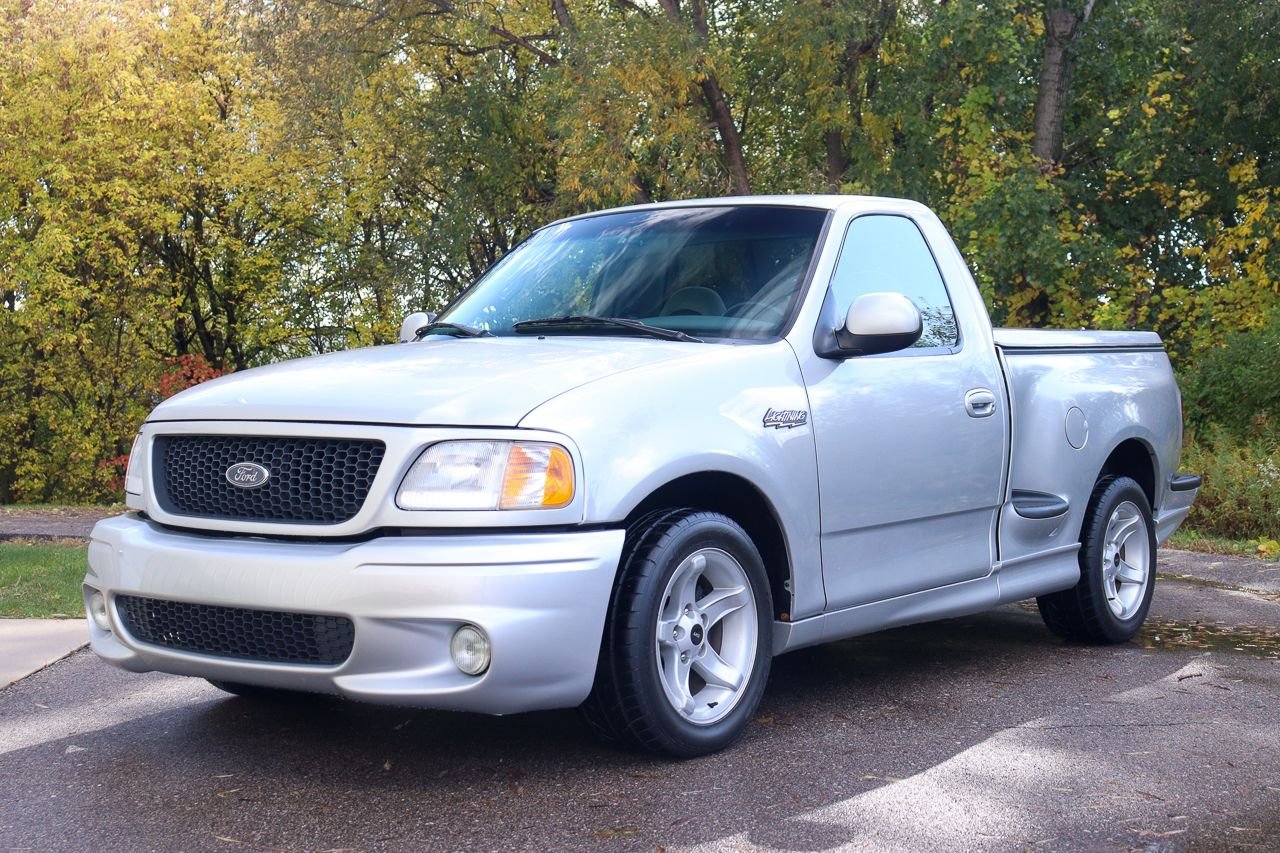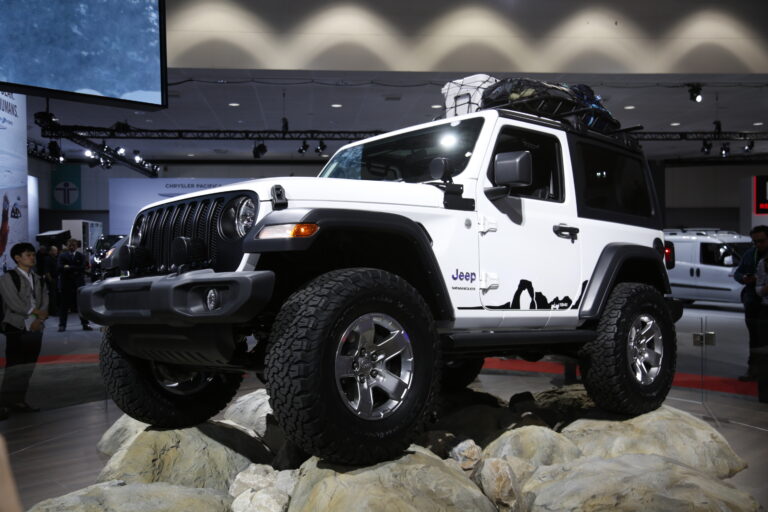2000 Jeep Cherokee Parts For Sale: Keeping the XJ Legend Alive
2000 Jeep Cherokee Parts For Sale: Keeping the XJ Legend Alive jeeps.truckstrend.com
The 2000 Jeep Cherokee (XJ generation) stands as a testament to rugged simplicity, off-road prowess, and enduring reliability. A true automotive icon, its no-nonsense design and robust 4.0L inline-six engine have cemented its place in the hearts of enthusiasts and practical drivers alike. Even over two decades after its production, thousands of these beloved SUVs continue to roam roads and trails, a testament to their inherent durability. However, like any vehicle, even the mighty XJ requires regular maintenance, occasional repairs, and sometimes, upgrades to keep it performing at its best. This comprehensive guide delves into the world of 2000 Jeep Cherokee parts for sale, providing you with the knowledge and resources to maintain, repair, and even enhance your cherished XJ.
The Enduring Legacy of the 2000 Jeep Cherokee XJ
2000 Jeep Cherokee Parts For Sale: Keeping the XJ Legend Alive
The XJ Cherokee, produced from 1984 to 2001, is often lauded as one of the greatest SUVs ever made. Its unibody construction, combined with solid axles, offered a unique blend of on-road comfort and unparalleled off-road capability. The 2000 model year, being one of the last iterations, benefited from years of refinements, making it a particularly sought-after version. Its straightforward mechanical design means that many repairs are manageable for the home mechanic, and the abundance of parts, both new and used, contributes significantly to its longevity. Owners choose to keep their XJs for their timeless appeal, low cost of ownership (once purchased), and their ability to tackle almost any terrain.
Why Seek Parts for Your 2000 Jeep Cherokee?
The reasons for acquiring parts for a 2000 Jeep Cherokee are diverse, reflecting the vehicle’s age and its various uses:
- Routine Maintenance: This is the most common need. Parts like oil filters, air filters, spark plugs, belts, hoses, and brake pads are consumables that require regular replacement to ensure optimal performance and prevent more significant issues down the line.
- Essential Repairs: Over time, components wear out or fail. This could include anything from a faulty oxygen sensor or a worn-out water pump to a leaking radiator, a failing starter, or a noisy wheel bearing. Addressing these repairs promptly is crucial for safety and reliability.
- Restoration Projects: Many XJ enthusiasts undertake full or partial restorations, aiming to bring their vehicles back to original or even better-than-new condition. This can involve sourcing body panels, interior trim pieces, wiring harnesses, or even entire engine and transmission assemblies.
- Performance Upgrades & Customization: The XJ is a highly customizable platform. Owners frequently seek parts like lift kits, heavy-duty bumpers, winches, upgraded suspension components, larger tires, enhanced lighting, and engine performance modifications to tailor their Jeep to specific off-road or lifestyle needs.
- Accident Repair: Unfortunately, accidents happen. Finding replacement body parts, headlights, taillights, or structural components is necessary to repair accident damage.

Types of 2000 Jeep Cherokee Parts Available
Understanding the different categories of parts will help you make informed purchasing decisions:
- OEM (Original Equipment Manufacturer) Parts: These are parts made by the original manufacturer or by a company that supplies parts to Jeep directly. They offer guaranteed fit and quality, identical to the parts your XJ came with from the factory. The downside is often higher cost and sometimes limited availability for older models.
- Aftermarket Parts: Produced by companies other than the original manufacturer, aftermarket parts offer a vast range of options. They can vary widely in quality and price, from budget-friendly replacements to high-performance upgrades. Many reputable aftermarket brands specialize in Jeep parts, offering superior performance or durability over OEM for certain applications.
- Used/Salvage Parts: Sourced from junkyards or parts vehicles, used parts are the most cost-effective option. They are original equipment and ideal for components where appearance isn’t critical or where a new part is prohibitively expensive or unavailable (e.g., specific interior trim pieces, body panels, or complete engine/transmission assemblies). The primary drawback is the uncertain condition and lack of warranty.
- Remanufactured Parts: These are used parts that have been rebuilt to original specifications, often with new internal components. Common remanufactured items include alternators, starters, steering boxes, brake calipers, and engines. They offer a good balance of cost savings and reliability, usually coming with a warranty.

Where to Find 2000 Jeep Cherokee Parts For Sale
The market for 2000 Jeep Cherokee parts is robust, offering numerous avenues for sourcing:
- Online Retailers: This is arguably the largest source. Websites like RockAuto, Amazon, Summit Racing, Quadratec, Morris 4×4 Center, and JC Whitney offer extensive catalogs of new aftermarket and some OEM-style parts. Many specialty Jeep parts suppliers (e.g., Crown Automotive, Omix-ADA, Rough Country, Old Man Emu) also have their own online stores or are stocked by larger retailers.
- Local Auto Parts Stores: Chains like AutoZone, Advance Auto Parts, O’Reilly Auto Parts, and NAPA often stock common maintenance and repair items for the XJ. While their selection for older models might be limited compared to online, they offer the convenience of immediate pickup and local expert advice.
- Jeep Dealerships: While less common for routine parts on a 2000 model, dealerships can still order specific, hard-to-find OEM parts if available. They are typically the most expensive option.
- Salvage Yards/Junkyards: For used parts, local and online salvage yards (e.g., Car-Part.com) are invaluable. You can find everything from body panels and interior components to complete engines and axles at a fraction of the cost of new.
- Specialty Jeep Forums & Social Media Groups: Online communities like JeepForum.com, NAXJA.org (North American XJ Association), and various Facebook groups dedicated to the XJ are excellent resources. Members often sell parts, offer advice, or can point you to specific suppliers.
Key Considerations When Buying Parts
Navigating the world of XJ parts requires a discerning eye. Keep these points in mind:
- Part Compatibility: This is paramount. Always verify that the part is specifically designed for a 2000 Jeep Cherokee, especially considering engine (4.0L vs. rare 2.5L), transmission type (automatic vs. manual), and trim level. Cross-reference part numbers with your existing component or your vehicle’s VIN if unsure.
- Quality vs. Price: Don’t always opt for the cheapest part, especially for critical components like brakes, steering, and suspension. A slightly higher investment in quality can save you from premature failure and costly re-repairs.
- New vs. Used: For wear-and-tear items or safety components, new parts are generally recommended. Used parts are great for body panels, interior trim, or larger assemblies where the cost of new is prohibitive and the part’s function isn’t safety-critical.
- Warranty: New and remanufactured parts usually come with a warranty, offering peace of mind. Clarify the warranty terms (duration, coverage) before purchase. Used parts typically come "as-is."
- Return Policy: Especially for online purchases, ensure the retailer has a clear and reasonable return policy in case the part doesn’t fit or is defective.
- Shipping Costs: For heavy or bulky items (e.g., bumpers, transfer cases, body panels), shipping costs can significantly inflate the total price. Factor this into your budget.
Common 2000 Jeep Cherokee Parts & Potential Issues
Knowing common failure points can help you anticipate part needs:
- Engine (4.0L I6): Known for longevity but can develop oil leaks (rear main seal, oil filter adapter), cooling system issues (radiator, water pump, thermostat), and occasional sensor failures (O2, crank position sensor).
- Drivetrain: Automatic transmissions (AW4) are robust but eventually wear out. Transfer cases (NP231, NP242) are generally solid but seals can leak, and linkages can become sloppy.
- Suspension & Steering: Leaf springs can sag over time, leading to a "saggy butt" appearance. Control arm bushings wear out, as do tie rod ends, ball joints, and the steering gear box.
- Brakes: Rotors, pads, and calipers are standard wear items. Rear drum brakes can seize.
- Electrical: Power window motors are notorious for failing. Various sensors, wiring harnesses, and the blower motor resistor can also be culprits for electrical gremlins.
- Body & Interior: Rust is a major concern, particularly on rocker panels, floorboards, and rear quarter panels. Door handles, window regulators, and various interior trim pieces can break or become brittle with age.
Practical Advice and Actionable Insights
- Prioritize Safety: Always invest in high-quality parts for brakes, steering, and suspension components. Your safety and that of others depends on it.
- Do Your Homework: Before buying, research common issues for the specific part you need. Watch YouTube tutorials for installation to gauge complexity.
- Compare and Contrast: Don’t jump on the first deal you see. Compare prices and read reviews from multiple sellers and brands.
- Consider Preventative Maintenance: Replace wear items like belts and hoses before they fail to avoid being stranded.
- Join the Community: The XJ community is incredibly supportive. Leverage forums and social media for advice, troubleshooting, and even finding parts from fellow enthusiasts.
- Learn Basic DIY: The XJ is a great vehicle to learn on. Many common repairs are straightforward, saving you significant labor costs.
Table of Representative 2000 Jeep Cherokee Parts & Estimated Price Ranges
Please note: Prices are highly variable based on brand (OEM, aftermarket, performance), quality, retailer, and market conditions. These are estimates for new aftermarket or OEM-style replacement parts, excluding shipping and labor.
| Part Category | Specific Part | Estimated Price Range (USD) | Notes |
|---|---|---|---|
| Engine & Cooling | Oil Filter | $5 – $15 | Essential routine maintenance. |
| Air Filter | $10 – $30 | Improves engine efficiency. | |
| Spark Plugs (Set of 6) | $20 – $60 | Replace every 30k-50k miles. | |
| Water Pump | $40 – $120 | Common cooling system repair. | |
| Radiator | $80 – $200 | Aluminum/plastic replacement. | |
| Serpentine Belt | $20 – $50 | Critical for accessories. | |
| Oxygen Sensor (Upstream/Downstream) | $40 – $100 | Affects fuel economy and emissions. | |
| Crank Position Sensor | $30 – $80 | Common cause of no-start issues. | |
| Brakes | Front Brake Pads (Set) | $30 – $70 | Ceramic or semi-metallic. |
| Front Rotors (Each) | $30 – $80 | Standard replacement. | |
| Rear Brake Shoes (Set) | $25 – $60 | For drum brake equipped models. | |
| Brake Caliper (Remanufactured) | $40 – $80 (plus core) | For disc brake equipped models. | |
| Suspension & Steering | Front Coil Springs (Pair) | $80 – $200 | OEM replacement or slight lift. |
| Rear Leaf Springs (Pair) | $150 – $400 | Heavy duty or lift options available. | |
| Front Lower Control Arms (Pair) | $80 – $180 | Aftermarket fixed or adjustable. | |
| Tie Rod End | $20 – $50 | Critical for steering. | |
| Ball Joint (Each) | $25 – $70 | Upper and lower, often replaced in pairs. | |
| Steering Stabilizer | $30 – $80 | Reduces bump steer. | |
| Electrical & Interior | Power Window Motor | $30 – $70 | Common failure point. |
| Headlight Assembly (Each) | $40 – $100 | Replacement for cracked or faded lights. | |
| Tail Light Assembly (Each) | $30 – $80 | OEM style replacement. | |
| Blower Motor Resistor | $15 – $40 | Controls fan speed for HVAC. | |
| Door Handle (Exterior) | $15 – $30 | Often breaks with age. | |
| Drivetrain | Transfer Case Shift Linkage | $20 – $60 | Improves sloppy 4×4 engagement. |
| U-Joint (Driveshaft) | $20 – $40 | For driveshaft or front axles. |
Frequently Asked Questions (FAQ)
Q: Are 2000 Jeep Cherokee parts hard to find?
A: No, thankfully. Due to the XJ’s enduring popularity and long production run, there is a robust aftermarket and used parts market. Common wear items are readily available, and even more specialized components can usually be sourced with a bit of searching.
Q: Can I use parts from other XJ years for my 2000 Cherokee?
A: Often, yes, but with caution. Many mechanical components (like the 4.0L engine, transmissions, axles) are interchangeable across various XJ years, especially within the 1997-2001 facelift models. However, body panels, interior trim, and certain electrical components can differ significantly between early (pre-1997) and late models. Always verify compatibility using part numbers or by consulting XJ-specific forums.
Q: What’s the difference between OEM and aftermarket parts?
A: OEM (Original Equipment Manufacturer) parts are made by or for Jeep and are identical to what came on your vehicle from the factory, ensuring perfect fit and quality. Aftermarket parts are made by other companies; their quality can range from basic replacements to high-performance upgrades, often at a lower price point than OEM.
Q: Is it safe to buy used parts for my XJ?
A: For non-safety critical components like interior trim, body panels, or even larger assemblies like engines or transmissions (if thoroughly inspected and from a reputable source), used parts can be a great, cost-effective option. However, for brakes, steering, suspension, and other critical safety components, new parts are generally recommended for reliability and peace of mind.
Q: What are common rust spots to check for when buying body parts or a used XJ?
A: The most common rust areas on an XJ are the rocker panels (below the doors), the floorboards, the rear quarter panels (especially behind the rear wheels), and sometimes around the windshield frame or drip rails. Check these areas thoroughly if buying used body parts or a complete vehicle.
Q: How do I know if a part will fit my specific 2000 Cherokee?
A: The best way is to use your vehicle’s VIN (Vehicle Identification Number) when shopping online, as many retailers allow you to input it for fitment verification. Alternatively, cross-reference the part number of your old component, consult the vehicle’s service manual, or ask an experienced parts specialist or a knowledgeable member of an XJ online community.
Conclusion
The 2000 Jeep Cherokee is more than just a vehicle; it’s a testament to a golden era of utilitarian design and rugged capability. Its continued presence on our roads and trails is largely due to the passionate community of owners and the readily available parts market. Whether you’re undertaking routine maintenance, tackling a major repair, or embarking on a custom build, finding the right 2000 Jeep Cherokee parts for sale is an achievable and rewarding endeavor. By understanding the different types of parts, knowing where to look, and making informed decisions, you can ensure your beloved XJ continues to serve faithfully for many more years, keeping the legend alive.




